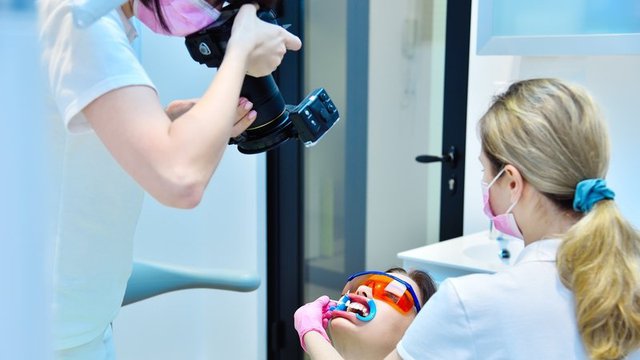
For some time now, photography has become a key tool when carrying out a multitude of dental treatments, such as those related to oral surgery, dental aesthetics, implantology, conservative dentistry, orthodontics or periodontics, to name but a few.
In this post, we tell you everything you need to know about dental photography and how to have it professionally taken. And if you’d like to become in expert in how to a take dental images, you should consider studying a Degree in Dentistry in Madrid, Degree in Dentistry in Valencia or a Degree in Dentistry in Alicante at Universidad Europea.
Dental photography has many functions and, for this reason, professionals in all fields across the dentistry specialities, are increasingly using them to optimise their work and establish good communication with the patient.
Today, dental imaging is an important resource when it comes to:
Dental photographs are divided into 3 groups. These are:
These are photographic shots that frame the full face of the patient, both front and profile, as a portrait.
These are made up of:
This type of dental imaging is used to accurately capture the hard and soft tissues inside the patient's mouth to better observe the relationships between them.
They consist of:
These dental photographs are a way of documenting all the tests performed on a patient and, in this way, keeping track of the treatment. Complementary dental images are usually attached to the patient's medical record.
They can show
In general, a basic dental imaging kit contains the following items:
It is best to use SLR cameras with interchangeable lenses. Nowadays, there are many brands on the market and models suitable for both beginners and experts.
This lens allows you to set a minimum focusing distance and take dental photographs from very close up.
The flash is of vital importance due to the fact that the mouth is dark and the proximity with which the camera is held is very close. However, the flash that comes as standard on cameras does not usually give really good results, as the illumination is not very uniform because it is located on the top of the device.
Instead, it is advisable to use other types of lighting, for example:
These are tools that come into contact with the patient's oral cavity (hence the importance of proper sterilisation after each use) and are used to better capture dental images.
Some of the most used in dental photography sessions are:
If you decide to study one of our dentistry programmes, you will get plenty of opportunities to learn and practice dental photography before you launch your professional career. We have a simulated hospital and medical facilities where you will initial work on your technique and throughout the degree you will also complete more than 400 hours of clinical practice and one of our centres.